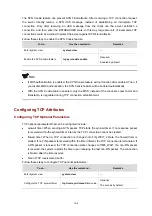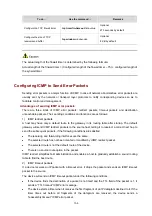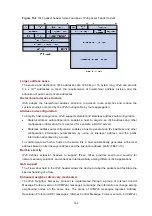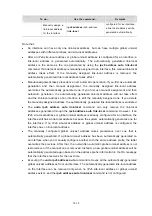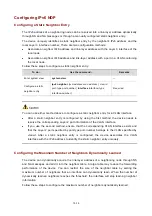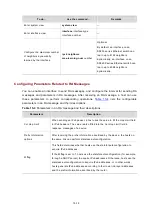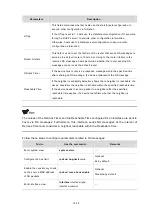
15-8
IPv4). DAD is accomplished through NS and NA message exchange.
shows the
DAD process.
Figure 15-4
Duplicate address detection
The DAD process is:
1) Host A sends an NS message whose source address is the unspecified address and whose
destination address is the corresponding solicited-node multicast address of the IPv6
address to be detected. The NS message contains the IPv6 address.
2) If Host B uses this IPv6 address, Host B returns an NA message. The NA message
contains the IPv6 address of Host B.
3) Host A learns that the IPv6 address is being used by Host B after receiving the NA
message from Host B. If receiving no NA message, Host A decides that the IPv6 address is
not in use and uses this address.
Router/prefix discovery and address autoconfiguration
Router/prefix discovery enables a node to locate the neighboring routers and to learn from the
received RA message configuration parameters such as the prefix of the network where the
node is located.
Stateless address autoconfiguration enables a node to generate an IPv6 address automatically
according to the information obtained through router/prefix discovery.
Router/prefix discovery is implemented through RS and RA messages as follows:
1) At startup, a node sends an RS message to request from any available router for the
address prefix and other configuration information for autoconfiguration.
2) A router returns an RA message containing information such as Prefix Information options.
(The router also periodically sends an RA message.)
3) The node automatically generates an IPv6 address and other configuration information
according to the address prefix and other configuration parameters in the RA message.

